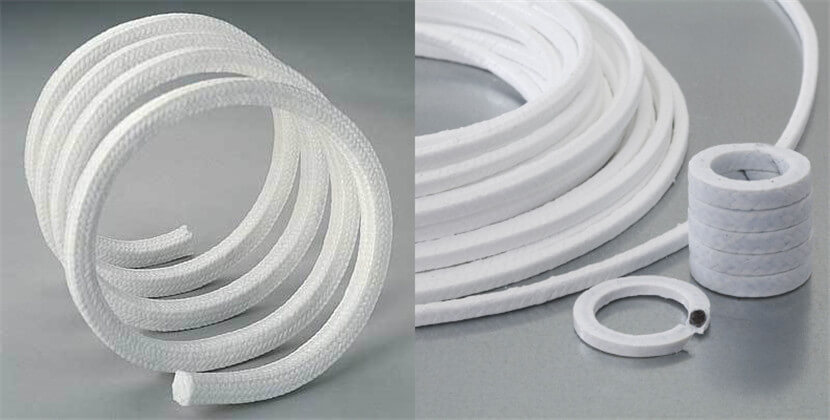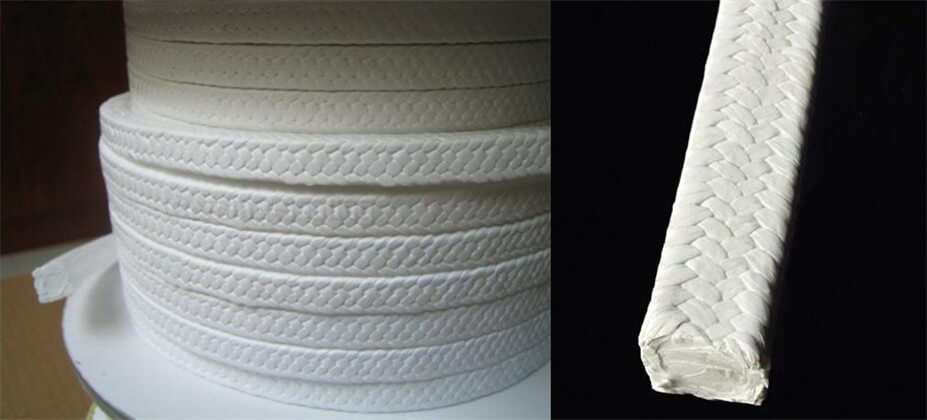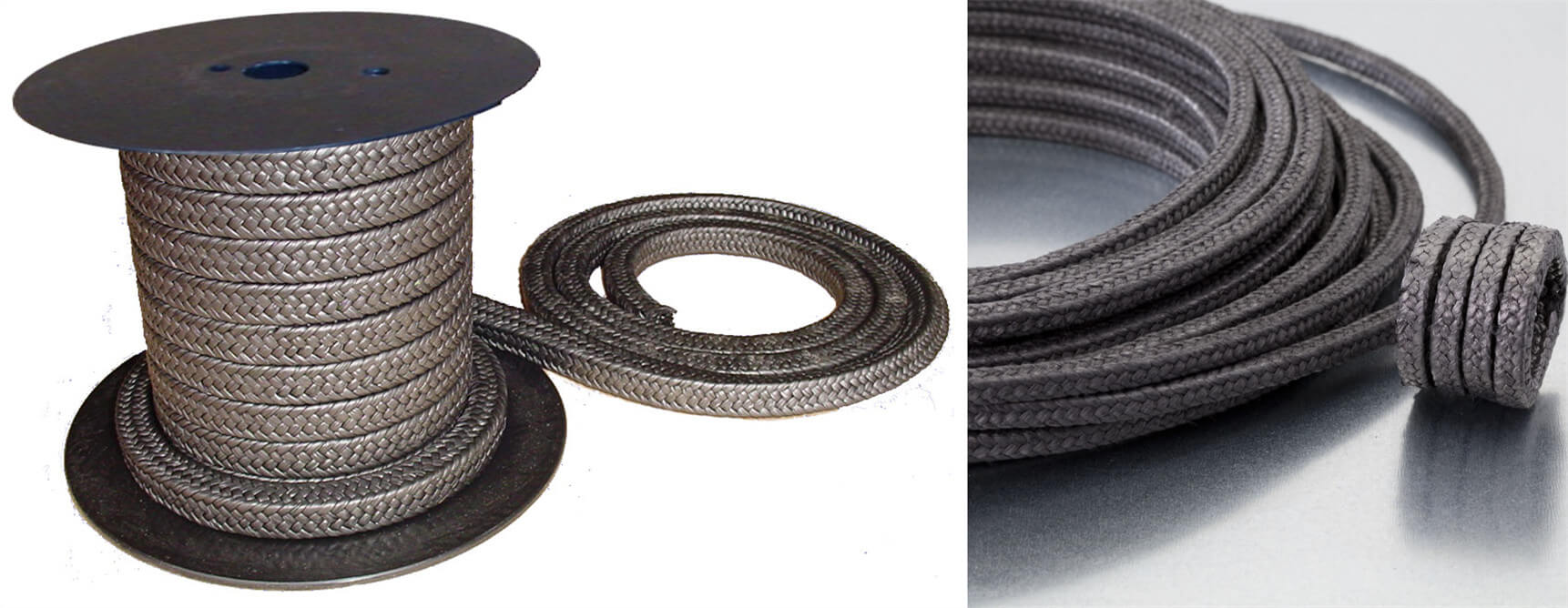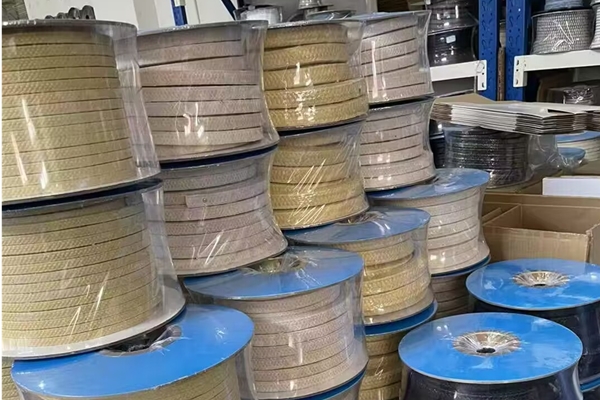Many braided packing factories are often asked to simply provide “PTFE packing”. Although this seems to be a straightforward request, it generates questions that must be answered to ensure the correct application of PTFE packing. A clear understanding of the differences between different forms of PTFE braided packing will enable the pump or valve to choose a reliable seal.

In many forms of PTFE braided packing, the right choice is to utilize its strength and minimize its limitations. If the selection and application are incorrect, it may result in poor performance and increased maintenance. To effectively apply PTFE, it is necessary to understand the properties of the material. Some unique properties of PTFE make it an excellent ingredient for braided packing:
- Excellent chemical resistance
One of the main reasons for using PTFE packing materials is that it is not affected by various corrosive fluids, including very strong acids, alkalis and solvents. Perhaps the most important thing is that PTFE can resist strong oxidants such as nitric acid, chlorine dioxide, high concentration sulfuric acid (Oleum) and so on. Polytetrafluoroethylene may be the only practical choice for applications involving these media.
- Contact with most surfaces has a low coefficient of friction
The non-wet, slippery, and low friction properties of PTFE are well known. This helps reduce power consumption and heat generation at the filler-shaft interface.
Although PTFE has its strength, certain properties of PTFE are not ideal in many pump packing applications. The problems encountered with PTFE fillers are usually due to its poor thermal and mechanical properties:
- Cold flow or creep under pressure
As the temperature increases, the creep increases. When pressure is applied to the 100% PTFE packing for a period of time, the packing may become a dense solid mass, which requires frequent adjustments to maintain the seal. It also tends to squeeze into the gap between the top and bottom of the stuffing box.
- Low thermal conductivity
When frictional heat is generated in contact with a high-speed rotating shaft, pure PTFE has a tendency to absorb heat, and it is not allowed to dissipate to the surrounding environment. The higher leakage rate across the surface of the packing shaft needs to keep the PTFE packing burning or carbonizing.
- High thermal expansion coefficient
As the temperature increases, PTFE expands much faster than the surrounding metal. This expansion increases the pressure that the packing exerts on the pump shaft and pump hole.

PTFE Fiber Filler
Many manufacturers produce packing styles that use polytetrafluoroethylene as the base fibre. These types may provide various lubricants as dry fibre, fibre-coated PTFE dispersion, or fibre-coated. It is good practice to use these products only when there are no other PTFE alternatives, including the use of very corrosive chemicals, such as strong oxidants, or applications that require materials suitable for food or pharmaceutical processes. Consult the packing manufacturer to determine which specific styles are suitable for these services.
It is especially important to use Teflon fibre packing and follow the manufacturer’s temperature, speed and pressure limits. When used in rotating equipment, these fillers are very sensitive to adjustments. Generally, a lower gland pressure is required, and the leakage rate is higher compared to other packings.
Expanded PTFE Packing
The appearance of PTFE yarn is similar to twisted PTFE tape. The most common form is polytetrafluoroethylene (ePTFE) impregnated with graphite to increase its thermal conductivity and rated speed. Compared with PTFE fibre filler, PTFE braid packing is less sensitive to heat accumulation. They can withstand higher speeds and provide lower leakage rates. At higher pressures, ePTFE fillers can exhibit cold flow and extrusion.
Teflon Coated packing
When the excellent chemical resistance of pure polytetrafluoroethylene is not required, many fibre materials can be coated with polytetrafluoroethylene to improve the filler performance and utilize the strength of polytetrafluoroethylene. These fibres can also help reduce or eliminate some of the weaknesses of pure PTFE weaving.
The mixed synthetic fibre and glass fibre yarn can be coated with polytetrafluoroethylene to produce economical and versatile fillers, which have higher resilience, greater resistance to extrusion and lower adjustment than PTFE fibre weaving. Sensitivity. They can also be coated with a dispersion mixture of PTFE and graphite to further improve the speed capability and heat dissipation characteristics of the weaving.

Aramid fibre filler with PTFE coating can be used in applications requiring extreme wear resistance. The new PTFE fibre packing with PTFE coating can be used for mild corrosive service and has better resilience and anti-extrusion performance than PTFE fibre braid.
There are many types of fibre braids and coatings made of carbon and graphite. Chemical resistance is excellent (with the exception of strong oxidizers), they are fast and capable of high temperatures, and they have excellent resilience. At high temperatures, they do not soften or extrude, and they are also extremely resistant to abrasion.
By understanding the strengths and limitations of the various forms of braided PTFE packing, you can choose a product that will most effectively meet the pump or valve sealing demands of a process.




